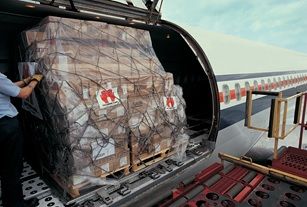The Bureau of Civil Aviation Security (BCAS) has issued an advisory, tightening security measures for cargo (parcels) and mail, especially those that exceed 500 gm in weight, before they are loaded onto commercial aircraft, with a view “to preclude possibility of any act of unlawful interference with civil aviation operations.”
These measures underscore the responsibility of Regulated Agents and Aircraft Operators, both domestic and foreign, for checking what is loaded onto the aircraft. While the measures themselves are nothing new, the advisory stresses that the agents and operators should “meticulously implement” the security procedures that are in vogue for acceptance and screening of cargo and mail.
The advisory requires the agents and operators to make sure that the contents of the shipment match their description in the shipping documents. It calls for visual inspection or profiling of the shipment to make sure that there are no signs of tampering.
“All concerned stakeholders shall also enhance vigilance for shipments originating from areas deemed high risk and consider applying multiple screening methods.” These methods should include x-ray and physical search. Furthermore, the cargo and mail “shall be escorted by the security staff of the concerned entity till loading onto the designated aircraft.
The advisory also emphasises strict adherence to the guidelines related to access control to cargo premises, to “prevent unauthorised interference.” The industry believes that the advisory has been issued in the wake of the “pager detonation” incidents in Lebanon.
J Krishnan of the Chennai-based Natesa Iyer LLC, a leading freight forwarder, noted that the advisory is silent on minimum equipment standards to enforce its recommendations and individual discretion is advocated.
“This will vary significantly with the ground personnel qualified to screen;high terminal operators can also exert passive influence to keep perception of their cargo operations from being considered antagonistic from the user viewpoint.”
“Some amount of scaling can be achieved only when x-ray scanning is complemented by a hand held spectrophotometer. However, the disadvantage is current hand held appliances lack the range and need to be held very close to the scanned parcel to be effective,” he said.
Plastic IED cannot be detected in metal scanners, and only the vapours can be picked up by spectrometry. The plastic explosives poses a huge challenge due to their low vapourisation
“Unless a huge investment is made in state of art detection equipment and robust revengineering of the security process is implemented we will remain vulnerable,” he said.
In some of the international airports, IEDs are usually detected through a chemical swab based test. Combined with x-ray it should be effective, said a source.
The recent pager explosions in Lebanon and Syria that killed a dozen and injured over 3,000 have indeed opened a pandora’s box for the global logistics industry. Reports suggest the use of PETN (Pentaerythritol tetranitrate) that evades detection using conventional explosive detection techniques due its low vapourisation and organic content, said R Vittal Raj, an expert on security-related matters.
“The pager explosions have brought back explosives of the genre of PETN to light. Now every mobile, electronic and computing equipment capable of communication would need to be suspected. This also accentuates the conventional challenges of detecting such explosives concealed in other than objects capable of communication,” Raj said. He called for the use of artificial intelligence to gather intelligence on threats.








